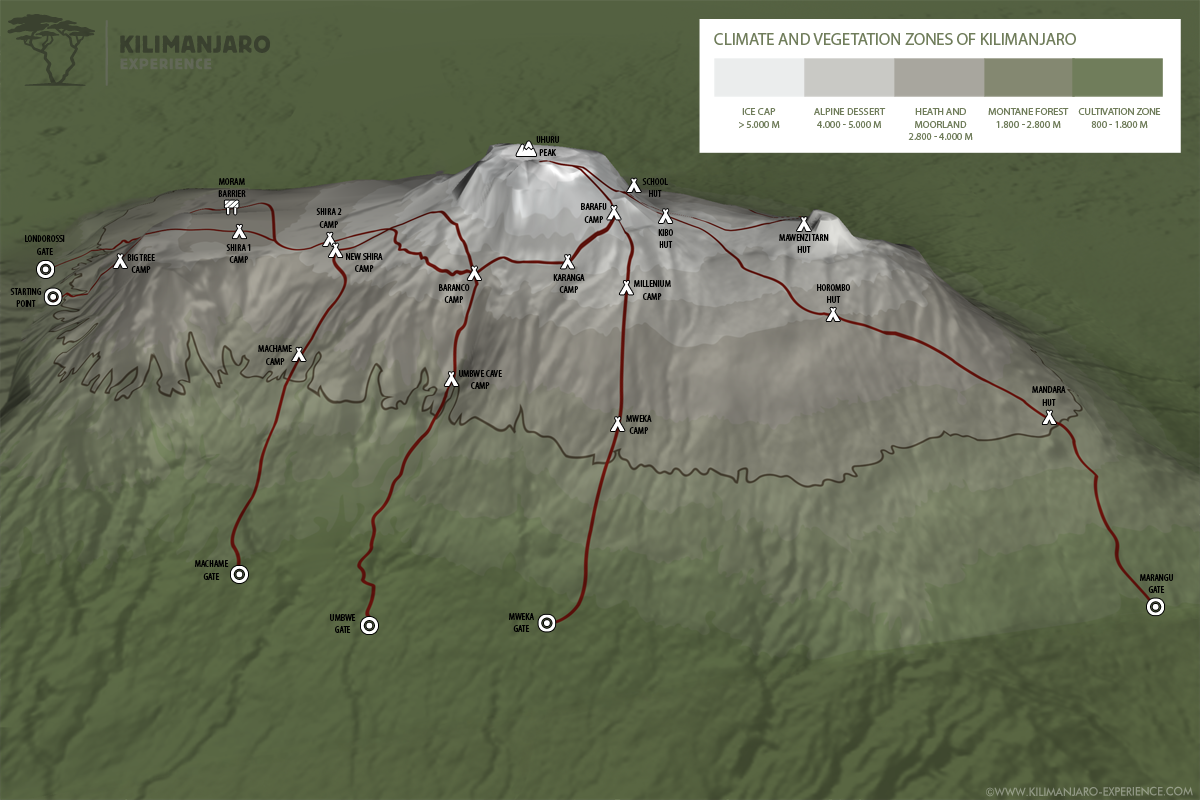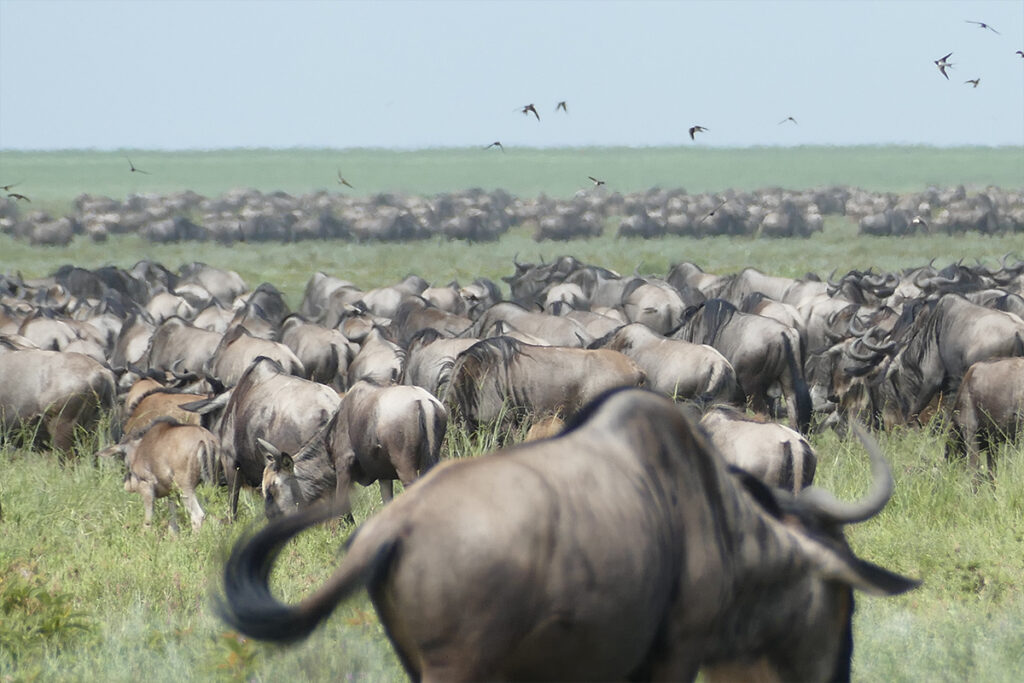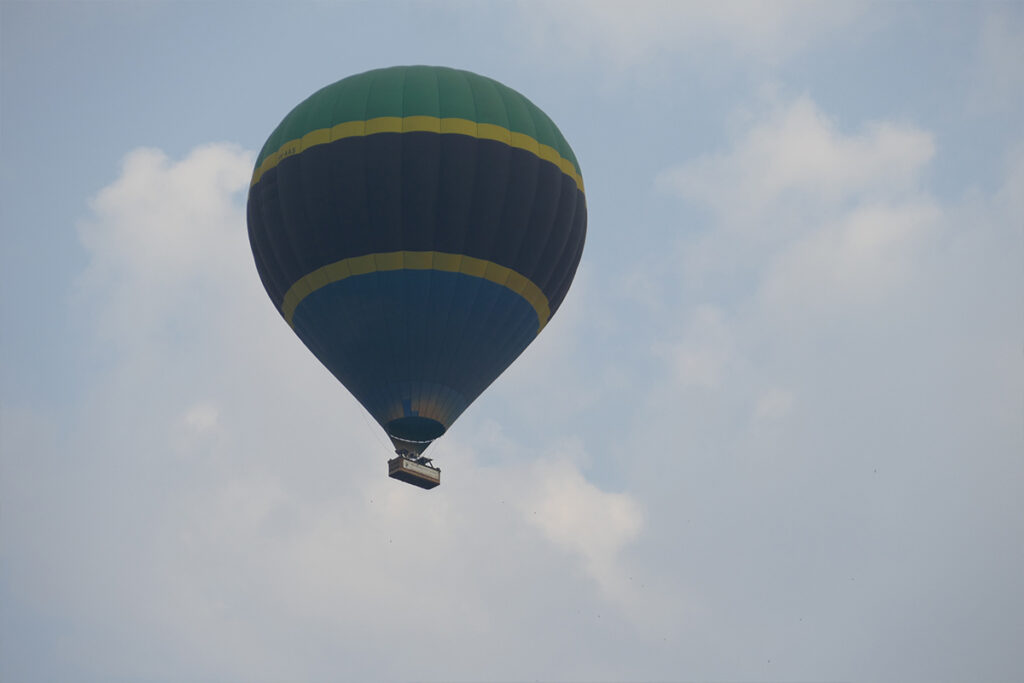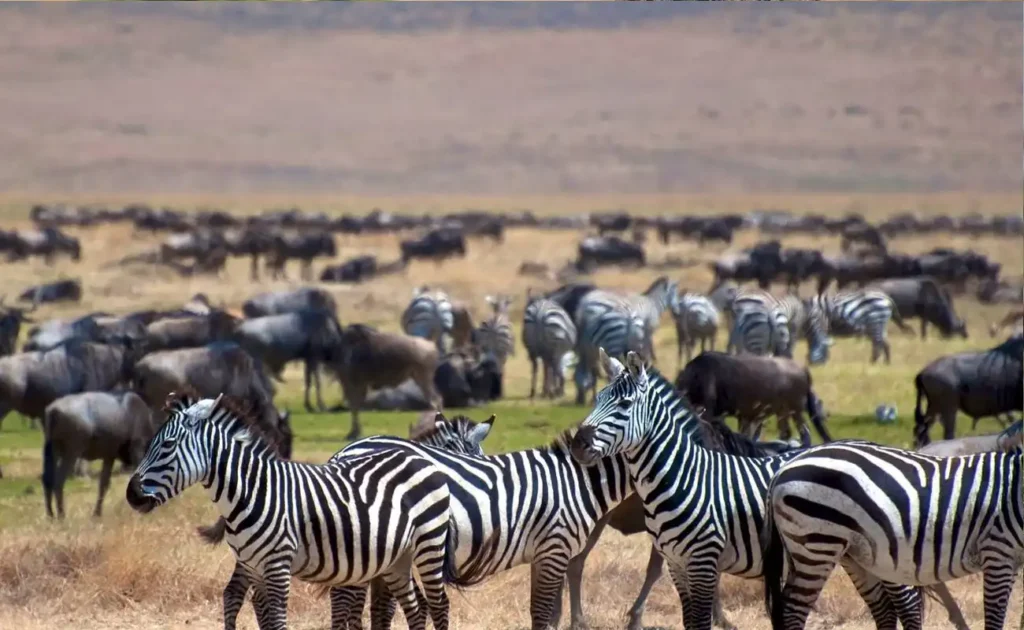Standing at 5,895 meters, Kilimanjaro is not only Africa’s tallest mountain but an alluring challenge for avid adventurers across various skill levels. Sharing tales of high altitude endeavors, climbers often debate which of the seven routes to choose for an awe-inspiring ascent. But what if you knew that picking the right path could significantly enhance your success rate and overall experience?
With a rich tapestry of history, each Kilimanjaro route offers a unique perspective, from the popular Marangu with its ‘Coca-Cola route’ nickname to the challenging and scenic Lemosho. Known for its higher summit success rates, the Lemosho route sees fewer trekkers, offering a more private connection with nature. Statistics reveal that carefully selected paths based on acclimatization strategies can see success rates climb as high as 90%, ensuring that both personal triumph and safety harmoniously intertwine.

Discover the Best Kilimanjaro Routes for Your Adventure
Kilimanjaro offers a variety of routes to its summit, each unique in its terrain and experience. The Marangu Route, also known as the “Coca-Cola route,” is the most popular due to its gradual slope and accommodation huts. If you seek more adventure, the Machame Route, nicknamed the “Whiskey route,” provides steeper challenges. This path, while tougher, rewards with stunning scenery. Choosing the right route can make your climb both memorable and successful.
For those who desire a more scenic and remote experience, the Lemosho Route is ideal. It offers breathtaking views and a higher success rate due to its longer duration. This path also has fewer trekkers, adding to the serene experience. The Rongai Route, approaching from the north, is known for its quiet trails. It’s perfect for those seeking solitude and a different perspective of Kilimanjaro.
Want more of a challenge? The Umbwe Route is the steepest and most direct path to the summit. It’s recommended only for experienced climbers due to its difficult terrain. However, the rewards include less crowded trails and quicker access to the summit. Deciding on the client difficulty level is crucial when considering this path.
Each route offers a distinct adventure, so it’s important to think about your fitness level and preferences. A longer route with more days usually means a higher chance of successfully reaching the summit. Factors such as trail conditions and climate also play a role in your decision. Using a table to compare the different routes can help make the best choice. Here’s a quick comparison:
| Route | Duration (days) | Difficulty | Scenery |
|---|---|---|---|
| Marangu | 5-6 | Moderate | Good |
| Machame | 6-7 | Challenging | Excellent |
| Lemosho | 7-8 | Moderate | Excellent |
| Rongai | 6-7 | Moderate | Good |
| Umbwe | 5-6 | Very Challenging | Good |
Climbing Kilimanjaro | 9 THINGS You Need To Know
1. Marangu Route: The Classic Path
The Marangu Route is the oldest and most established route to Kilimanjaro’s summit. Known as the “Coca-Cola route” because refreshments are available along the way, it is a favorite for its gradual slope. This route provides accommodations in huts, making it more comfortable for climbers. It’s also the only route where climbers ascend and descend on the same path. This route’s popularity means more company on the trail but also more support facilities.
Climbers often choose the Marangu Route for its moderate difficulty compared to other paths. Despite the regular traffic, the route passes through diverse landscapes, from tropical rainforest to alpine desert. The trail is well-maintained, which contributes to its accessibility. This accessibility doesn’t diminish the challenge, though, as altitude sickness is still a concern. Proper acclimatization and slow, steady progress can help with this.
Here’s a quick view of points along the Marangu Route:
| Point | Altitude (meters) | Features |
|---|---|---|
| Marangu Gate | 1,870 | Start Point |
| Mandara Hut | 2,720 | First Night |
| Horombo Hut | 3,720 | Second Night |
| Kibo Hut | 4,703 | Final Base Camp |
| Uhuru Peak | 5,895 | Summit |
While the Marangu Route is often chosen by beginners, it offers an enriching experience for any climber. It allows trekkers to bond over shared huts and the communal experience. This route, despite being crowded, stays one of the fastest ways to the top. But remember, the quick ascent requires careful planning and preparation. Always prioritize your health and well-being on this adventure.
2. Machame Route: The Whiskey Route
The Machame Route, often called the “Whiskey route,” is known for its challenging ascent and breathtaking scenery. Unlike the Marangu Route, this path is steeper and more demanding, catering to those seeking a more intense trekking experience. Its name reflects the fact that it offers a stronger “taste” of adventure. This route provides climbers with incredible views of Mount Kilimanjaro’s varied landscapes. It’s highly recommended for its panoramic vistas and sense of achievement.
One of the highlights of the Machame Route is its diverse ecological zones. Starting in the dense rainforest, climbers move through moorlands and alpine deserts before reaching the icy summit. This variety keeps the journey interesting and showcases the incredible biodiversity of Kilimanjaro. The longer route means better acclimatization, increasing the chances of summiting successfully. Moreover, the descending path is different from the ascent, offering new scenery on the way down.
Here is an outline of key points along the Machame Route:
| Point | Altitude (meters) | Features |
|---|---|---|
| Machame Gate | 1,800 | Start Point |
| Machame Camp | 3,010 | First Night |
| Shira Camp | 3,840 | Second Night |
| Barranco Camp | 3,950 | Third Night |
| Barafu Camp | 4,673 | Final Base Camp |
| Uhuru Peak | 5,895 | Summit |
The Machame Route is popular among seasoned trekkers and adventure enthusiasts. Climbers appreciate the physical challenge and the visual rewards of the journey. However, it would help if you prepared well for the experience, as the longer duration and tougher terrain require good fitness and stamina. Always pack adequately, hydrate, and ensure you’re ready for high-altitude trekking to enjoy a safe and exhilarating adventure.
3. Lemosho Route: Scenic and Remote
The Lemosho Route is renowned for its stunning scenery and remote paths, making it a favorite among those who want to combine adventure with breathtaking views. Starting on the western side of Kilimanjaro, this route traverses lush rainforests, rocky ridges, and alpine deserts. It provides a quieter experience because it has fewer climbers compared to other routes. The longer duration on this path allows for better acclimatization. This combination of factors generally leads to a higher success rate for reaching the summit.
One of the biggest attractions of the Lemosho Route is the opportunity to see wildlife in the Shira Plateau. This area is home to various animals, including buffaloes, elephants, and even the elusive leopard. The scenic trek through the diverse landscape keeps each day’s hike unique and interesting. The initial days spent in the forest increase the chances of spotting rare birds and other wildlife. Climbers often consider this route the most beautiful way to the top.
Here’s a quick guide to points along the Lemosho Route:
| Point | Altitude (meters) | Features |
|---|---|---|
| Londorossi Gate | 2,200 | Start Point |
| Shira Camp 1 | 3,500 | First Night |
| Shira Camp 2 | 3,840 | Second Night |
| Barranco Camp | 3,950 | Third Night |
| Barafu Camp | 4,673 | Final Base Camp |
| Uhuru Peak | 5,895 | Summit |
The Lemosho Route is praised for its adaptability, catering to both seasoned climbers and newcomers. Its gradual ascent helps trekkers acclimate, reducing the risk of altitude sickness. Transitioning through different climate zones, hikers enjoy varied landscapes every day. This versatility makes the Lemosho Route an enriching and rewarding adventure. Many climbers regard it as the most thorough and scenic route up Kilimanjaro.
Climbers also rave about the Lemosho Route because of the stunning panoramic views available at different points. The route takes you along ridges and over plateaus that provide sweeping vistas of the surrounding environment. The trek gives ample time for taking in the sights and photographing the journey. These views add special memories to your adventure and make the Lemosho Route stand out. With fewer people on the path, you can fully absorb the natural beauty without the crowd.
4. Rongai Route: The Quiet Path
The Rongai Route offers trekkers a quieter path up Mount Kilimanjaro, making it perfect for those seeking solitude. Starting from the north, near the Kenyan border, this route sees fewer climbers compared to others. The path is less rugged and provides easy, steady walking. Despite its remote nature, the Rongai Route takes trekkers through a range of dramatic landscapes. These include rainforest, moorlands, and alpine desert.
One of the main attractions of the Rongai Route is its low crowds, offering a peaceful trekking experience. Because it starts on the dry side of Kilimanjaro, the weather is often clear and the views spectacular. Trekking on Rongai, you’ll have a different perspective of the mountain, adding to the adventure’s uniqueness. Each day brings a new landscape to explore, providing plenty of photography opportunities. As trekkers go higher, the trail becomes more exhilarating, with views expanding.
Key points along the Rongai Route:
| Point | Altitude (meters) | Features |
|---|---|---|
| Nalemoru (Rongai) Gate | 2,020 | Start Point |
| Simba Camp | 2,625 | First Night |
| Kikelewa Camp | 3,650 | Second Night |
| Mawenzi Tarn Camp | 4,315 | Third Night |
| School Hut | 4,800 | Final Base Camp |
| Uhuru Peak | 5,895 | Summit |
The Rongai Route’s northward approach also offers a unique chance to spot wildlife, especially in the lower forested regions. You might see colobus monkeys or birds that are not typically found on the southern routes. The trek provides a fantastic introduction to the biodiversity of Kilimanjaro. The chance of encountering fewer tourists makes the experience more authentic and connected to nature. This route, due to its advantages, is becoming increasingly popular.
Consider the Rongai Route if you’re looking for a less crowded, unique experience on Kilimanjaro. The different trail unfolds surprising sights every day. With the right preparation and equipment, you can enjoy an unforgettable adventure. The Rongai Route caters to those who want a blend of tranquility and challenge. Reaching the top via this path provides not just accomplishment, but also lasting memories.
5. Umbwe Route: The Steep Challenge
The Umbwe Route is known for its steep and rapid ascent, making it one of the most challenging paths up Kilimanjaro. This route is best suited for seasoned climbers who crave a thrilling and quick journey to the summit. Starting at the Umbwe Gate, the trail demands strength and endurance right from the get-go. The rugged path is less traveled, offering a sense of isolation and adventure. Climbers gain elevation quickly, which can pose acclimatization challenges.
Due to its steepness, the Umbwe Route offers breathtaking views and dramatic landscapes. The trail goes through dense rainforest before transitioning to moorland and then alpine desert. Despite its difficulty, the reward includes panoramic vistas and fewer crowds. The rapid gain in altitude means a reduced time for acclimatization. Therefore, proper preparation and physical conditioning are essential for a successful climb.
Key points along the Umbwe Route:
| Point | Altitude (meters) | Features |
|---|---|---|
| Umbwe Gate | 1,640 | Start Point |
| Umbwe Cave Camp | 2,850 | First Night |
| Baranco Camp | 3,950 | Second Night |
| Karanga Camp | 3,995 | Third Night |
| Barafu Camp | 4,673 | Final Base Camp |
| Uhuru Peak | 5,895 | Summit |
Another unique aspect of the Umbwe Route is its sense of remoteness. The fewer number of climbers makes it a more personal and intimate experience. This route is often chosen by expedition groups or experienced climbers who prefer a quieter trail. The challenging terrain means fewer amenities and less support. Therefore, self-sufficiency and resilience are crucial for those choosing this path.
If you’re looking for a tough, rewarding journey, the Umbwe Route delivers an unforgettable adventure. You’ll face steep trails, gaining height quickly but with stunning views to keep you going. This route is as much a mental challenge as it is a physical one, making the summit’s victory all the sweeter. Being well-prepared and in good shape is key to conquering this steep path. Those who succeed often cite it as one of their most memorable climbs.
Factors to Consider When Choosing a Route
Choosing the right route for your Kilimanjaro climb involves several important factors. One of the main considerations is your fitness level and hiking experience. Some routes, like the Marangu, offer a more gradual incline and are suited for beginners. Meanwhile, routes like Umbwe are steep and challenging, better suited for experienced trekkers. Assessing your physical condition can help you avoid unnecessary risks.
Another critical factor is the time you have available for the climb. Kilimanjaro routes vary in duration from five to nine days. Longer routes such as Lemosho and Machame provide better acclimatization periods, which increase success rates. If you’re on a tighter schedule, shorter routes might be considered but beware of the higher risk of altitude sickness. It’s crucial to choose a route that aligns with your timeframe while considering safety.
Consideration of the scenic value is also significant when selecting a route. Each path offers different views and ecological zones along the way. The Rongai Route begins in arid regions and crosses into lush rainforest areas, offering varied wildlife spotting opportunities. If scenery is essential to you, picking a more scenic trail like Lemosho can enhance your overall experience.
- Fitness Level: Your physical condition will dictate how difficult a route you can handle.
- Time Available: Routes range from five to nine days; longer trips aid acclimatization.
- Scenic Value: Different paths offer unique landscapes and wildlife encounters.
- Crowd Levels: Some routes are busier than others – choose based on your preference for solitude or social trekking.
The level of crowding on each route might influence your decision too. Popular paths such as Marangu often see more hikers compared to quieter ones like Rongai or Lemosho. Your preference for solitude or social interaction will guide this choice. Finally, budget plays an essential role in deciding as certain routes require more resources due to their length and logistical demands.
Choosing the right Kilimanjaro route involves balancing these elements according to personal preferences and constraints. Analyzing each factor carefully ensures that you select a path that provides both safety and enjoyment during your adventure. Each route has its own charm and challenges but understanding what suits you best will lead to an unforgettable climbing experience.
Preparing for Your Kilimanjaro Adventure
Getting ready for a Kilimanjaro adventure involves careful preparation to tackle its diverse challenges. One crucial step is to build your fitness over several months leading up to the climb. Focus on cardio exercises like running, cycling, or swimming to boost endurance. Strength training for legs, core, and arms can also help improve stability and climbing ability. With enhanced fitness, you’ll be better equipped to enjoy the trek and reduce fatigue.
Caring for your health by visiting a doctor before your trip is essential. A check-up ensures you are in good condition to handle high altitudes and physical exertion. Vaccinations recommended for Tanzania include yellow fever, hepatitis A, and typhoid. Discuss possible altitude sickness and preventive measures to stay safe. Taking precautionary health steps makes your climb safer and more enjoyable.
Planning your gear is another important part of preparing for Kilimanjaro. The right equipment can make your hike comfortable and successful. Keep a detailed packing list with essentials for mountain trekking:
- Warm clothing, including thermal layers and a waterproof jacket
- Sturdy hiking boots with good grip
- Sun protection like sunglasses and sunscreen
- Sleeping bag suitable for sub-zero temperatures
- Backpack for carrying daily essentials
It’s vital to choose a reliable guide service to enhance your climbing experience. Guides offer critical support, ensuring you follow safe practices and stay on the proper path. They can help adjust your pace, improving acclimatization and comfort. Choose an experienced tour operator with local knowledge and a good reputation. A well-coordinated team increases your chance of reaching the summit.
Finally, learn about the cultural and natural environment of Kilimanjaro to enrich your adventure. Understanding local customs and conservation efforts promotes respect and responsible trekking. Knowing about the unique flora and fauna adds another layer of appreciation to the journey. Your preparation should encompass not only physical readiness but cultural awareness as well. This holistic approach ensures a memorable, rewarding Kilimanjaro adventure.
What to Expect During the Climb
Climbing Kilimanjaro is an exhilarating yet demanding experience. From lush rainforests to snowy summits, you journey through varied climates and terrains. Along the way, you adjust to the thinner air as you go higher in altitude. Sunrise and sunset offer breathtaking skies, making the effort truly rewarding. The quietness of the mountain lets you connect deeply with nature and your own thoughts.
Each route presents unique challenges and sights, so understanding these beforehand can ease your climb. On forested trails, expect to see exotic plants and possibly wildlife such as monkeys. As you move through moorlands, the landscape becomes rockier and barren. Alpine deserts test your stamina, but they offer stunning views. Your guides will play a crucial role in pacing the journey and offering encouragement.
Expect changes in weather, as conditions on Kilimanjaro can vary dramatically in a single day. Morning sun may give way to afternoon rain or snow. Wearing layers helps you adjust quickly to temperature shifts. Wind can be brisk and chilling at night, especially near the summit. This is why high-quality gear is essential for comfort and safety.
During the climb, you’ll follow a daily routine that becomes familiar. Mornings start with a hearty breakfast to fuel the day’s trek. Each day you walk for several hours, stopping for lunch. Evenings are spent at camps, enjoying meals and sharing stories with fellow climbers. This routine supports proper acclimatization and rest.
You’ll likely experience a range of emotions, from the physical challenge to the joy of achievement. Reaching the summit is a triumph marked by breathtaking views of the world below. The final push requires mental grit and determination. Despite fatigue, the memory of standing atop Africa’s highest peak will stay with you forever. This life-changing journey inspires gratitude and accomplishment.
Key Takeaways
- Machame Route offers scenic diversity with a challenging climb.
- Lemosho Route provides excellent views and better acclimatization opportunities.
- Rongai Route is best for climbers seeking solitude.
- Marangu Route features hut accommodations with a more gradual slope.
- Umbwe Route is the steepest, suited for experienced adventurers.




